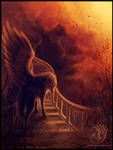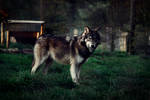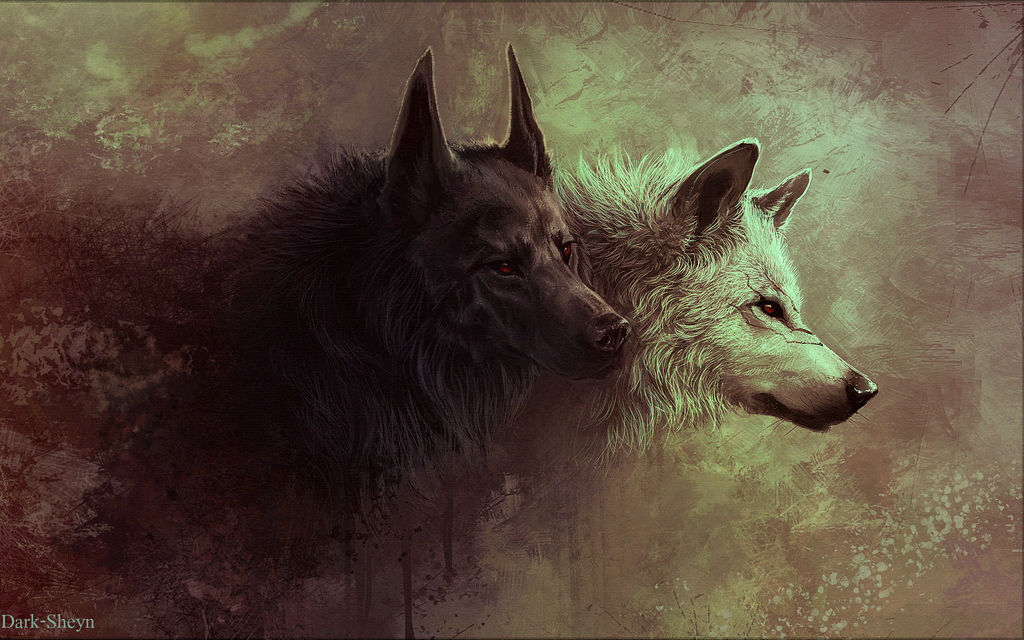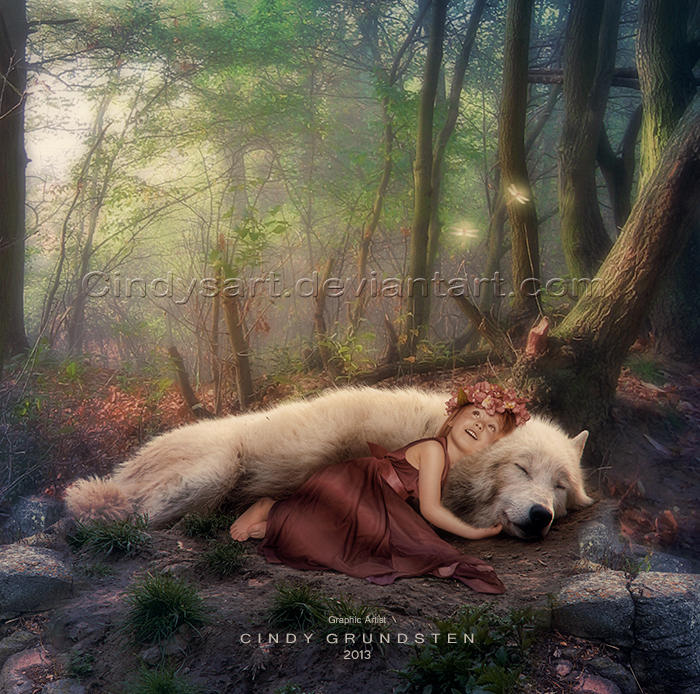Symbolism in Ancient Cultures
The Wolf
I
© All audio material in this video is copyrighted
by Adrian von Ziegler.
Symbolism
The wolf is a common motif in the foundational mythologies and cosmologies of peoples
throughout Eurasia and North America (corresponding to the historical extent of the habitat of
the gray wolf). The obvious attribute of the wolf is its nature of a predator, and
correspondingly it is strongly associated with danger, destruction, making it the symbol of
the warrior on one hand, and that of the devil on the other. The wolf holds great importance
in the cultures and religions of the nomadic peoples, both of the Eurasian steppe and of the
North American Plains. In many cultures, the identification of the warrior with the wolf
(totemism) gave rise to the notion of Lycanthropy, the mythical or ritual identification of
man and wolf.
Archetypal Significance of the Wolf
The archetypal significance of the wolf symbolizes evil as well as positive and spiritual
aspects. The wolf also represents the union of opposites. From mythology and story telling
from all parts of the world the wolf has carried a sense of contradiction: a wild and fearful
animal that can represent death and Satan; but at the same time a companion to the goddess
Artemis and Scandinavian god, Odin. The theme of opposites in the imagery of the wolf is also
represented by the contrast between the masculine and feminine nature. The masculine nature of
the wolf is depicted by many cultures as the protector or exhibiting war-like behavior. The
feminine nature is symbolized as the goddess in she-wolf form nurturing the twins, Romulus and
Remus, or in the Irish myth of Cormac, King of Ireland who was suckled by wolves and was
always accompanied by them. Early Biblical sources present a contrast between the wolf
symbolizing bloodshed and destruction versus the symbol of the wolf and the lamb lying down
together representing peace and the coming Messianic rule. The middle ages also depicted a
contrast between the image of the wolf as the Devil, versus the wolf as an "emblem of Saint
Francis of Assisi who tamed the wolf".
People from many cultures and traditions have interpreted the wolf as an instinctive creature.
At some point in psychological development, most people struggle with integrating the
spiritual and physical aspects of their being. The image of the wolf has been used to
represent both aspects. The Chinese saw the wolf as a guardian of the heavenly palace. In
Japan the wolf was admired for its ferocity, tenacity and swift attack. Also, they considered
the wolf to be from heaven and to be venerated. Early Biblical sources represented the wolf as
destructive and associated with the evening, and dishonest gain, bloodshed and
destruction.
The wolf today still represents our "instinctive nature that is wild and natural". Estes
(1992) suggests that there is a wild and natural creature within every woman, who is filled
with good instincts, passionate creativity, and ageless knowing. This wild woman within is
seen as an archetype that carries images, ideas, and unique behaviors for humankind. The gifts
of wildish nature come to women at birth, but society, in many instances, will attempt to
civilize them into rigid roles which will destroy the inner treasure and muffle the deep,
life-giving messages of the soul. As a result, women become trapped, over-domesticated,
uncreative, and have fearful feelings. For women to find their soul, they will need to face
their instinctive wild self so that they can become free, creative, and loving. Estes (1992)
illustrated her ideas by telling the story of La Loba, the wolf woman. Her work was collecting
bones of wolves and singing life into them. The story symbolizes the soul-voice. It conveys
the truth of a woman's power and need to breathe soul over the thing that is ailing or in need
of restoration. Women can do it "by descending into the deepest mood of great love and
feeling, until one∂s desire for relationship with the wildish Self overflows, then to speak
one's soul from that frame of mind" . The wild woman is an archetype that carries images,
ideas, and unique behaviors for humankind that help people to find their soul.
The wolf can be seen as a symbol on an intrapsychic level for individuation. The unique voice
of the Self triumphs over the collective norms of society. Individuation suggests a commitment
to inner growth and development.
Symbolically the wolf appears to represent our instinctive nature that is wild and natural. The wolf can also represent the union of opposites and contradiction. The lone wolf may symbolize the acceptance of natural instincts that had been cut off by family and society and the process of growth and individuation. And the howling wolf illustrates the reclaimed inner voice of the soul.
Cherokee Wisdom: Two Wolves
An old Cherokee is teaching his grandson about life. “A fight is going on inside me,” he said to the boy.
“It is a terrible fight and it is between two wolves. One is evil – he is anger, envy, sorrow, regret, greed, arrogance, self-pity, guilt, resentment, inferiority, lies, false pride, superiority, and ego.” He continued, “The other is good – he is joy, peace, love, hope, serenity, humility, kindness, benevolence, empathy, generosity, truth, compassion, and faith. The same fight is going on inside you – and inside every other person, too.”
The grandson thought about it for a minute and then asked his grandfather, “Which wolf will win?”
The old Cherokee simply replied, “The one you feed.”
References:
Wikipedia
Sandplay Therapists of America
Cherokee Wisdom
Article-Tribute published in
Mystic Blood Blog
Direct Link
Raz









